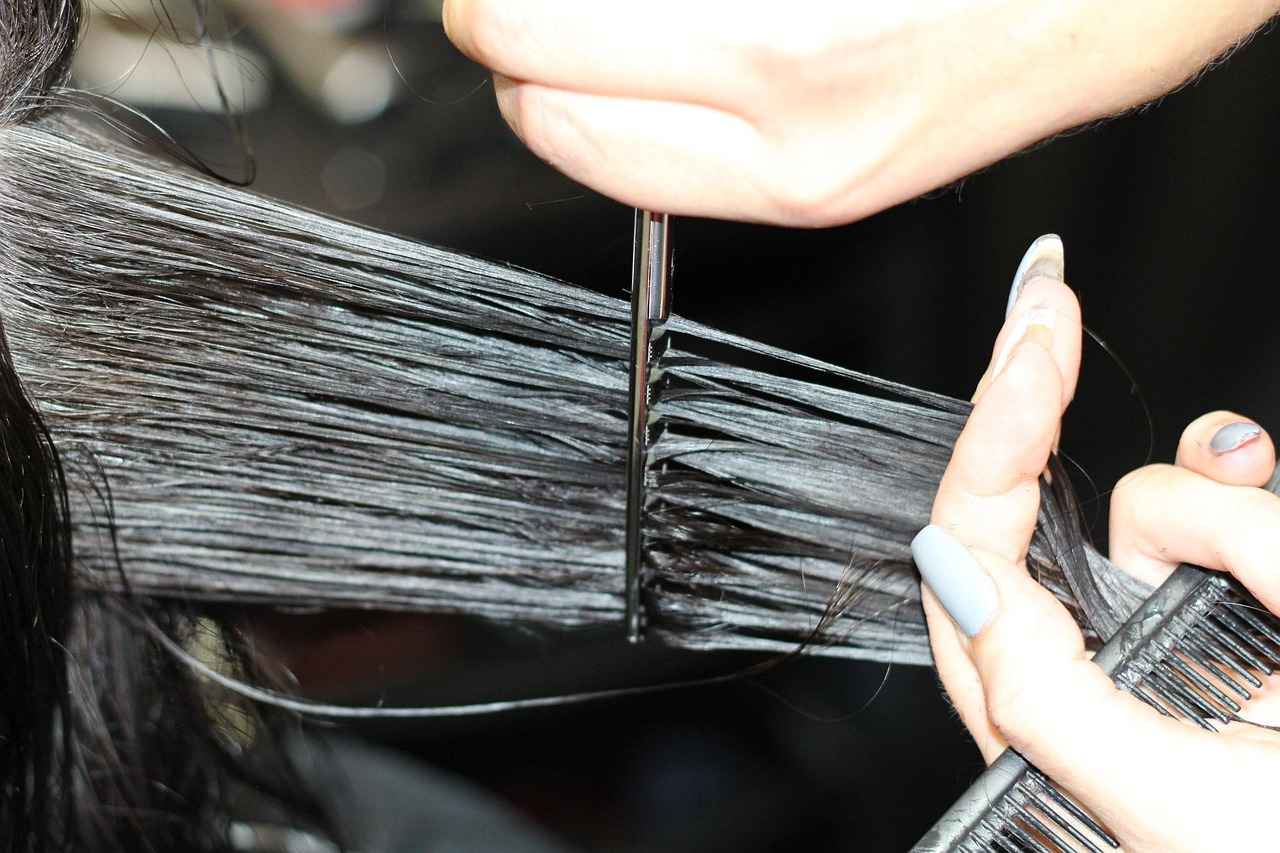This article explores essential factors to consider when reviewing a hair transplant clinic’s portfolio, ensuring you make an informed decision for your hair restoration journey.
Understanding Hair Transplant Techniques
Familiarizing yourself with various hair transplant methods, such as Follicular Unit Extraction (FUE) and Follicular Unit Transplantation (FUT), can significantly aid in assessing whether a clinic’s portfolio aligns with your desired results. Each technique has its advantages and suitability depending on individual needs.
Evaluating Before and After Photos
- Quality of Images: High-resolution images are crucial for accurately assessing the results of past procedures. They provide clear visuals of the hair restoration outcomes.
- Lighting and Angles: Proper lighting and angles can greatly influence the perception of results. Ensure that photos are taken under consistent conditions to allow for fair comparisons.
- Consistency in Results: Look for consistent outcomes across various patients, which can indicate a clinic’s reliability and skill in delivering successful hair transplant results.
Patient Testimonials and Reviews
Reading patient testimonials and reviews can provide valuable insights into the experiences of others. This helps gauge the clinic’s reputation and quality of care, offering a more personal perspective on the results.
Professional Credentials and Experience
- Board Certification: Confirming that the clinic’s practitioners are board-certified reassures you of their training and adherence to industry standards in hair restoration.
- Years of Operation: The number of years a clinic has been operating can reflect its expertise and stability in the field of hair transplantation.
Technology and Techniques Used
Understanding the technology and techniques employed by a clinic can help you determine if they are utilizing the latest advancements in hair restoration. Clinics that invest in innovative techniques may offer more effective and minimally invasive options.
Post-Operative Care and Support
Evaluating the post-operative care and support provided by a clinic is essential for ensuring a smooth recovery and optimal results after a hair transplant. Look for clinics that offer comprehensive follow-up care.
Cost Transparency and Financing Options
- Breakdown of Costs: A transparent breakdown of costs helps you understand what you are paying for, ensuring there are no hidden fees associated with the procedure.
- Financing Plans: Exploring financing options can make hair transplant procedures more accessible, allowing patients to choose a plan that best fits their budget.
Conclusion: Making an Informed Decision
In conclusion, carefully reviewing a hair transplant clinic’s portfolio can empower you to make an informed choice. This ensures your hair restoration journey is successful and satisfactory, leading to the results you desire.

Understanding Hair Transplant Techniques
When considering a hair transplant, it is crucial to familiarize yourself with the various techniques available, as this knowledge can significantly influence your choice of clinic. Two of the most popular methods are Follicular Unit Extraction (FUE) and Follicular Unit Transplantation (FUT). Both techniques have their unique advantages and drawbacks, making it essential to understand them thoroughly.
Follicular Unit Extraction (FUE) involves extracting individual hair follicles from the donor area, typically the back of the head, and implanting them into the balding or thinning areas. This method is minimally invasive, leading to quicker recovery times and less noticeable scarring. Patients often prefer FUE for its natural-looking results and the ability to wear shorter hairstyles without visible scars.
On the other hand, Follicular Unit Transplantation (FUT), also known as the strip method, involves removing a strip of scalp from the donor area, which is then dissected into individual follicular units for transplantation. While this method can yield a higher number of grafts in a single session, it typically results in a linear scar. FUT may be more suitable for patients requiring a larger number of grafts or those with extensive hair loss.
Understanding these methods allows you to assess a clinic’s portfolio effectively. Look for evidence of successful outcomes with both FUE and FUT in their past work. A reputable clinic should provide detailed information on their techniques, along with before and after photos that illustrate the results achieved with each method.
In conclusion, being well-informed about hair transplant techniques empowers you to evaluate clinics more critically. Assessing whether their portfolio aligns with your desired results is vital for ensuring a successful hair restoration journey.

Evaluating Before and After Photos
When considering a hair transplant, analyzing before and after images in a clinic’s portfolio is essential for several reasons. These images serve as a visual testament to the clinic’s expertise and the potential outcomes of hair transplant procedures.
Importance of Visual Evidence
Before and after photos provide prospective patients with a realistic expectation of the results they can achieve. They illustrate not only the quality of the work performed but also the variety of results that different individuals can experience based on their unique hair types and conditions. This visual evidence can help you gauge whether the clinic’s style aligns with your personal goals.
Quality and Clarity of Images
It’s crucial to assess the quality of the images presented. High-resolution photos taken under consistent lighting conditions allow for an accurate evaluation of the results. Blurry or poorly lit images can be misleading and may not represent the true outcome of the procedures.
Lighting and Angles Matter
The lighting and angles used in before and after photos can significantly influence the perception of results. Look for images that showcase the hair restoration from multiple angles and in various lighting conditions to get a comprehensive view of the results.
Consistency Across Results
Another critical aspect to consider is the consistency of results. A reputable clinic should demonstrate a track record of successful outcomes across various patients. This consistency can indicate a high level of skill and reliability in their procedures.
Patient Feedback and Reviews
In addition to images, patient testimonials can provide insights into the overall satisfaction of those who underwent procedures at the clinic. Positive feedback can further validate the effectiveness of the clinic’s techniques and the quality of care provided.
Conclusion
In conclusion, thoroughly evaluating before and after photos is a fundamental step in selecting a hair transplant clinic. By focusing on the quality, lighting, consistency, and patient feedback, you can make a more informed decision that aligns with your expectations and desired outcomes.
Quality of Images
is a crucial aspect when evaluating a hair transplant clinic’s portfolio. High-quality images serve as a reliable medium for assessing the effectiveness of previous procedures, offering patients a clear visual representation of the hair restoration outcomes.
When browsing through a clinic’s portfolio, it is essential to note that clarity and resolution play significant roles in conveying the results. Images should be sharp and well-lit, allowing potential clients to appreciate the nuances of the hair restoration process. Poor-quality images can lead to misinterpretations and unrealistic expectations.
| Factors to Consider | Importance |
|---|---|
| Image Resolution | High resolution ensures details are visible. |
| Lighting Conditions | Proper lighting enhances the visual appeal of results. |
| Angles and Perspectives | Different angles provide a comprehensive view of results. |
Additionally, the consistency of results across various patients is a vital indicator of a clinic’s skill level. A portfolio showcasing a range of successful outcomes can instill confidence in prospective patients. Look for a variety of cases that represent different hair types and restoration techniques.
Furthermore, before and after photos should ideally be taken under similar conditions to allow for accurate comparisons. This consistency helps in understanding the true effectiveness of the procedures performed at the clinic.
In conclusion, when assessing a hair transplant clinic’s portfolio, the quality of images is paramount. High-resolution, well-lit, and consistently captured photos provide an authentic glimpse into the potential results, aiding patients in making informed decisions about their hair restoration journey.
Lighting and Angles
When evaluating a hair transplant clinic’s portfolio, proper lighting and angles in photos are critical factors that can significantly influence the perception of results. High-quality images can showcase the skill and expertise of the clinic, but without appropriate lighting and angles, the true effectiveness of the procedures may be obscured.
Photos taken in natural light tend to provide a more accurate representation of hair restoration outcomes. This is because natural light reveals the true color and texture of the hair, allowing potential patients to see the results more clearly. Conversely, poor lighting can cast shadows and distort the appearance of the hair, making it appear less natural or uneven.
Additionally, the angle at which the photos are taken can greatly affect how results are perceived. For instance, images captured from multiple angles can provide a comprehensive view of the transplant’s success. A single angle may not fully represent the fullness or naturalness of the hair restoration, leading to misconceptions about the effectiveness of the procedure.
- Consistency in Lighting: Look for portfolios where lighting is consistent across all images. This helps in making fair comparisons between different cases.
- Variety of Angles: A good portfolio should include before and after images taken from various angles to showcase the overall results effectively.
- Post-Processing: Be cautious of heavily edited photos that may misrepresent actual results. Authenticity is key when assessing a clinic’s work.
In conclusion, when reviewing a clinic’s portfolio, pay close attention to the used in their images. This scrutiny will help you make a more informed decision about your hair restoration journey, ensuring that you choose a clinic that can deliver the results you desire.
Consistency in Results
is a critical factor when evaluating a hair transplant clinic’s portfolio. It is essential to look for patterns of successful outcomes across a diverse range of patients. This consistency not only reflects the clinic’s reliability but also showcases the skill and expertise of the medical team involved in the procedures.
When reviewing a clinic’s portfolio, consider the following aspects:
- Diversity of Cases: A clinic that demonstrates consistent results across various hair types, age groups, and degrees of hair loss indicates a comprehensive understanding of different patient needs.
- Outcome Similarity: Look for before-and-after photos that show a similar quality of results among multiple patients. This can suggest that the clinic employs effective techniques that yield predictable outcomes.
- Patient Satisfaction: Consistent results often correlate with high levels of patient satisfaction. Reviews and testimonials can provide insights into how well patients feel their expectations were met.
Furthermore, consistency in results can also be an indicator of a clinic’s commitment to ongoing education and technological advancement. Clinics that regularly update their techniques and stay informed about the latest trends in hair restoration are more likely to achieve consistent outcomes.
In conclusion, when assessing a hair transplant clinic, prioritizing across various patients is crucial. This focus not only helps to gauge the clinic’s reliability but also ensures that you are making a well-informed decision for your hair restoration journey.
Patient Testimonials and Reviews
play a crucial role in the decision-making process for individuals considering a hair transplant. By examining the experiences shared by previous patients, you can gain a deeper understanding of the clinic’s reputation and the quality of care they provide. This section will delve into the significance of these testimonials and how they can guide your choice of clinic.
When exploring patient reviews, it’s important to look for consistent themes in the feedback. Positive testimonials often highlight aspects such as the professionalism of the medical staff, the comfort of the clinic environment, and the success rates of the procedures performed. Conversely, negative reviews can shed light on potential concerns, such as long wait times or unsatisfactory results. By analyzing both positive and negative feedback, you can form a more balanced view of what to expect.
Moreover, consider the specific details that patients share about their experiences. Testimonials that include information about the consultation process, the techniques used, and the post-operative care can provide invaluable insights into the clinic’s approach to patient care. This information is essential for understanding how well the clinic aligns with your own expectations and needs.
Another aspect to consider is the volume of testimonials. A clinic with numerous reviews may indicate a higher level of experience and patient satisfaction. Additionally, look for reviews on independent platforms, as these are often more reliable than those found on the clinic’s own website. This can help ensure that the feedback is genuine and not curated.
In conclusion, patient testimonials and reviews are an essential resource when evaluating a hair transplant clinic. They not only offer insights into the experiences of others but also help you gauge the overall quality of care and the clinic’s reputation in the field. By taking the time to research and reflect on these experiences, you can make a more informed decision about your hair restoration journey.

Professional Credentials and Experience
When considering a hair transplant clinic, professional credentials and experience of the medical team are paramount. The qualifications of the practitioners can significantly influence the success of your hair restoration journey. Here’s what to look for:
- Board Certification: Ensure that the clinic’s medical staff is board-certified in dermatology or plastic surgery. This certification indicates that they have undergone rigorous training and adhere to established standards.
- Specialization: Look for practitioners who specialize in hair restoration. Specialized training can lead to better outcomes, as these professionals are more familiar with the nuances of hair transplant techniques.
- Years of Experience: The number of years a clinic has been operating can be a good indicator of its reliability and expertise. A long-standing clinic is likely to have refined its techniques and developed a solid reputation.
Additionally, consider the following:
- Continuing Education: Check if the practitioners engage in ongoing education and training. The field of hair restoration is constantly evolving, and staying updated with the latest techniques and technologies is crucial.
- Case Studies: A reputable clinic should be able to provide case studies or examples of their work. This not only showcases their skills but also helps you visualize potential results.
Patient Safety: Ensure that the clinic adheres to safety protocols and best practices during procedures. This includes using sterile equipment and maintaining a clean environment to minimize risks.
In conclusion, assessing the qualifications and experience of the clinic’s medical team is essential. By focusing on board certification, specialization, and years of experience, you can ensure that you are in capable hands during your hair restoration process.
Board Certification
Understanding the Importance of Board Certification in Hair Restoration
When considering a hair transplant clinic, one of the most critical aspects to evaluate is the of its practitioners. This certification serves as a testament to the physician’s training, expertise, and commitment to adhering to the highest industry standards in hair restoration. By ensuring that the clinic’s practitioners are board-certified, patients can gain peace of mind regarding the quality of care they will receive.
Board certification is not merely a formality; it indicates that a physician has undergone rigorous training and has demonstrated proficiency in their specialty. For hair restoration, this means the practitioner has a deep understanding of hair anatomy, the latest techniques, and the intricacies involved in successful hair transplant procedures. Such qualifications are crucial, as they directly impact the safety and effectiveness of the treatment.
Additionally, board-certified practitioners are often required to engage in continuing education, ensuring they stay updated on the latest advancements in hair restoration technology and techniques. This ongoing education is vital in a field that is constantly evolving, as it allows practitioners to offer their patients the most effective and innovative solutions available.
Furthermore, clinics that employ board-certified professionals are typically more transparent about their practices and outcomes. This transparency can be beneficial for prospective patients who wish to review the clinic’s portfolio, including before and after photos, to assess the quality of previous work.
In summary, confirming the board certification of a hair transplant clinic’s practitioners is essential for ensuring a high level of care and expertise. Patients who prioritize this factor can feel more confident in their choice of clinic and the potential outcomes of their hair restoration journey.
Years of Operation
play a crucial role in evaluating a hair transplant clinic. The duration a clinic has been in business can often serve as a testament to its expertise and stability in the field of hair transplantation. A clinic that has successfully operated for several years is likely to have encountered a wide range of cases and developed effective solutions to various challenges. This extensive experience can significantly enhance the quality of care provided to patients.
Moreover, longevity in the industry often indicates a clinic’s ability to adapt to changing technologies and techniques. Clinics that have been around for a long time tend to stay updated with the latest advancements in hair restoration methods, ensuring they offer the most effective treatments available. This adaptability not only reflects the clinic’s commitment to patient satisfaction but also its dedication to maintaining high standards in medical practice.
Additionally, a well-established clinic is more likely to have built a solid reputation within the community. This reputation can be assessed through patient reviews and testimonials, which often highlight the clinic’s history of successful outcomes. Clinics with a long operational history typically have a portfolio of before-and-after photos that showcase their work, giving potential patients confidence in their skills.
In conclusion, when considering a hair transplant clinic, evaluating the number of years it has been in operation is essential. It not only reflects the clinic’s experience and stability but also provides insights into its reputation and commitment to patient care. Therefore, take the time to research and choose a clinic that has a proven track record in the field of hair transplantation.

Technology and Techniques Used
In the ever-evolving field of hair restoration, understanding the technology and techniques utilized by a clinic is crucial. This knowledge not only helps you gauge the clinic’s commitment to innovation but also ensures that you are receiving the best possible care for your hair restoration needs.
Modern clinics often employ a variety of advanced techniques, including Follicular Unit Extraction (FUE) and Follicular Unit Transplantation (FUT). Familiarity with these methods can empower you to evaluate whether a clinic’s offerings align with your expectations and desired outcomes.
- Follicular Unit Extraction (FUE): This technique involves extracting individual hair follicles directly from the scalp and transplanting them to the balding areas. It is known for its minimally invasive nature and reduced recovery time.
- Follicular Unit Transplantation (FUT): Also known as the strip method, FUT involves removing a strip of scalp from the donor site and dissecting it into individual grafts. While it may leave a linear scar, it can yield a higher number of grafts in a single session.
Moreover, clinics that prioritize innovation often integrate cutting-edge technology such as robotic-assisted hair transplant systems. These systems enhance precision and can lead to improved outcomes. Understanding the tools and methodologies employed is essential for ensuring that you are receiving care that meets the latest standards in the industry.
Additionally, consider the post-operative care and support provided by the clinic. Comprehensive follow-up care is vital for a successful recovery and optimal results. A clinic that offers personalized support can significantly enhance your hair restoration experience.
In conclusion, by familiarizing yourself with the technology and techniques used in hair restoration, you can make a more informed decision about which clinic to choose. This knowledge not only helps you set realistic expectations but also ensures that you are investing in a treatment plan that utilizes the latest advancements in the field.
Innovation in Procedures
is a critical aspect to consider when selecting a hair transplant clinic. Clinics that prioritize the adoption of innovative techniques and cutting-edge technologies can provide patients with more effective and minimally invasive options for hair restoration. This not only enhances the overall experience but also significantly improves the outcomes of the procedures.
Modern hair restoration techniques such as Follicular Unit Extraction (FUE) and Robotic Hair Transplantation have revolutionized the field. These methods allow for precise extraction and placement of hair follicles, resulting in natural-looking results with reduced recovery times. Moreover, clinics that utilize advanced imaging technology can better plan and execute hair transplant procedures, ensuring optimal density and coverage.
Furthermore, the integration of platelet-rich plasma (PRP) therapy in conjunction with hair transplant procedures has shown promising results. PRP therapy involves using the patient’s own blood to promote healing and stimulate hair growth, enhancing the overall effectiveness of the transplant. Clinics that offer such comprehensive treatment options demonstrate a commitment to patient care and innovative practices.
It’s also essential to consider the post-operative care provided by the clinic. Innovative clinics often have tailored aftercare programs that monitor patient recovery and ensure the best possible results. This can include follow-up appointments, access to specialized products, and ongoing support, which are vital for achieving long-term success in hair restoration.
In summary, when evaluating a hair transplant clinic, focus on their commitment to . By choosing a clinic that embraces the latest advancements in technology and techniques, you can enhance your chances of a successful hair restoration journey.
Post-Operative Care and Support
is a critical aspect of the hair transplant journey that can significantly influence recovery and overall results. After undergoing a hair transplant, patients often have numerous questions and concerns regarding the care they will receive. Understanding the post-operative care offered by a clinic is essential for ensuring a smooth recovery and achieving optimal results.
First and foremost, it is important to evaluate the comprehensive care plan provided by the clinic. This plan should include detailed instructions on how to care for the transplant site, medications to manage pain or prevent infection, and guidelines on activities to avoid during the recovery period. A good clinic will also schedule follow-up appointments to monitor healing and address any concerns that may arise.
- Communication: Effective communication between the clinic’s staff and the patient is vital. Patients should feel comfortable reaching out with questions or concerns. A clinic that prioritizes open communication can help alleviate anxiety and ensure that patients feel supported throughout their recovery.
- Access to Professional Support: Look for clinics that provide access to medical professionals post-surgery. Whether through direct phone calls, email support, or virtual consultations, having access to expert advice can be reassuring for patients during recovery.
- Follow-Up Care: Regular follow-up appointments are essential for tracking progress and addressing any complications early. Clinics should have a structured follow-up schedule to ensure that patients are healing properly.
In addition, patient education plays a crucial role in post-operative care. Clinics should provide educational materials that explain what to expect during recovery and how to care for the transplanted hair. This empowers patients to take an active role in their recovery process, leading to better outcomes.
In conclusion, evaluating the post-operative care and support offered by a hair transplant clinic is vital for ensuring a successful recovery. By considering the aspects mentioned above, patients can make informed decisions and choose a clinic that prioritizes their health and well-being.

Cost Transparency and Financing Options
When considering a hair transplant, understanding the cost structure and available financing options is crucial for making a well-informed decision. The financial aspect of hair restoration can often be overwhelming, but breaking it down into manageable components can help ease the process.
Breakdown of Costs
- Consultation Fees: Initial consultations may have associated costs, which are important to clarify upfront.
- Procedure Costs: Different techniques, such as FUE (Follicular Unit Extraction) and FUT (Follicular Unit Transplantation), can vary significantly in price.
- Medications: Post-operative medications are often necessary and should be factored into the overall budget.
- Follow-Up Visits: Ensure you understand the costs associated with any follow-up appointments or additional treatments.
Financing Plans
Many clinics offer financing options to help patients manage the cost of their hair transplant. These plans can include:
- Payment Plans: Monthly payment plans can make the procedure more affordable over time.
- Credit Options: Some clinics partner with financing companies to provide credit options specifically for medical procedures.
- Insurance Coverage: While hair transplants are often considered cosmetic, some patients may find that their insurance covers part of the costs under specific circumstances.
By understanding the complete cost structure and exploring financing options, you can make a more informed decision regarding your hair transplant journey. It’s essential to have open discussions with your chosen clinic about all financial aspects to avoid unexpected expenses down the line.
Conclusion
In conclusion, a thorough understanding of cost transparency and available financing options not only aids in budgeting but also empowers you to choose a clinic that aligns with your financial capabilities. This knowledge is vital for ensuring a smooth and successful hair restoration experience.
Breakdown of Costs
When considering a hair transplant, understanding the financial aspects of the procedure is crucial. A clear and detailed can provide you with insights into what you are actually paying for, ensuring transparency and eliminating any surprises related to hidden fees.
Many clinics may present a base price for their services, but it is essential to delve deeper into what that price includes. This breakdown should encompass various components, such as:
- Initial Consultation Fees: Often, clinics charge for the initial evaluation, which may not be included in the overall cost.
- Procedure Costs: This is the main fee for the hair transplant procedure itself, which can vary based on the technique used (FUE, FUT, etc.).
- Anesthesia Fees: Depending on the method, anesthesia may be required, and its cost should be outlined.
- Post-Operative Care: Follow-up visits and medications prescribed after the procedure can add to the total cost.
- Additional Treatments: Some clinics offer complementary treatments, such as PRP therapy, which may not be included in the initial quote.
By obtaining a comprehensive cost breakdown, you can ensure that there are no hidden fees associated with your hair transplant procedure. This transparency not only builds trust but also allows you to budget effectively for your hair restoration journey.
Moreover, many clinics offer financing options that can make the procedure more accessible. Understanding these options can help you choose a payment plan that fits within your financial capabilities, ensuring that you can move forward with confidence.
In conclusion, a transparent cost structure is vital when selecting a hair transplant clinic. By being informed about the various components of the total cost, you can make an educated decision that aligns with your expectations and financial situation.
Financing Plans
play a crucial role in making hair transplant procedures more accessible to a wider range of patients. Many individuals may hesitate to pursue a hair restoration solution due to the perceived high costs associated with these procedures. However, understanding the available financing options can significantly alleviate these concerns, allowing patients to focus on achieving their desired outcomes without financial stress.
When considering financing plans for hair transplants, it is essential to explore various options that clinics may offer. Here are some key aspects to consider:
- Payment Plans: Many clinics provide flexible payment plans that allow patients to spread the cost of the procedure over several months. This option can make the procedure more manageable within a budget.
- Interest Rates: It is important to inquire about the interest rates associated with financing options. Some clinics may offer 0% interest for a specified period, which can be beneficial for patients looking to minimize overall costs.
- Third-Party Financing: Some clinics partner with third-party financing companies that specialize in medical procedures. These companies often have various plans tailored to fit different financial situations.
- Insurance Coverage: While most hair transplant procedures are considered cosmetic and may not be covered by insurance, it’s worth checking with your insurance provider to explore any potential coverage options or reimbursement possibilities.
- Promotional Offers: Clinics may run promotional offers or discounts during certain times of the year. Staying informed about these opportunities can lead to significant savings.
By exploring these financing options, patients can choose a plan that best fits their budget, making hair transplant procedures more attainable. Ultimately, this financial flexibility empowers individuals to invest in their self-esteem and overall well-being without compromising their financial stability.
In conclusion, understanding and evaluating financing plans is an essential step in the hair transplant journey. It ensures that patients can make informed decisions that align with both their aesthetic goals and financial capabilities.

Conclusion: Making an Informed Decision
When embarking on the journey of hair restoration, the importance of a thorough evaluation of a hair transplant clinic’s portfolio cannot be overstated. This process not only aids in making an informed decision but also significantly impacts the success and satisfaction of your hair restoration experience.
One of the first steps in this evaluation is to understand the various hair transplant techniques available. Familiarizing yourself with methods such as Follicular Unit Extraction (FUE) and Follicular Unit Transplantation (FUT) allows you to better assess whether the clinic’s portfolio showcases results that align with your personal goals.
Next, analyzing before and after photos in the clinic’s portfolio is essential. These images serve as a testament to the clinic’s expertise and the potential outcomes you might expect. Pay attention to the quality of these images, as high-resolution photos provide a clearer picture of the results achieved. Moreover, consider the lighting and angles used in these images, as they can significantly influence your perception of the results.
Consistency in results is another critical factor; look for varied patients who have achieved similar success. This consistency can be a strong indicator of the clinic’s reliability and skill.
Additionally, patient testimonials and reviews offer invaluable insights into the experiences of previous clients. These firsthand accounts can help you gauge the clinic’s reputation and the quality of care provided.
Finally, it is crucial to assess the professional credentials and experience of the medical team. Confirming board certification and the clinic’s years of operation can provide peace of mind regarding the quality of care you will receive.
In summary, a meticulous review of a hair transplant clinic’s portfolio equips you with the knowledge needed to make an informed decision. By considering the techniques, results, patient feedback, and professional credentials, you can ensure that your hair restoration journey is both successful and satisfying.
Frequently Asked Questions
- What should I look for in a hair transplant clinic’s portfolio?
When reviewing a clinic’s portfolio, focus on the quality of before and after photos, consistency of results, and patient testimonials. High-quality images taken from various angles in good lighting can give you a clearer picture of the clinic’s expertise.
- How important are patient testimonials?
Patient testimonials are crucial as they provide real-life insights into the experiences of others. They can reveal the clinic’s reputation, quality of care, and the satisfaction level of previous patients.
- What hair transplant techniques should I be aware of?
Familiarize yourself with techniques like Follicular Unit Extraction (FUE) and Follicular Unit Transplantation (FUT). Understanding these methods can help you assess if a clinic’s portfolio aligns with your desired results.
- Why is the medical team’s experience important?
The qualifications and experience of the medical team are vital for ensuring you receive safe and effective care. Look for board certification and the number of years the clinic has been in operation.
- How can I ensure there are no hidden costs?
A transparent breakdown of costs is essential. Make sure to ask the clinic for a detailed list of expenses to avoid any surprises later on.












